9 Tips for Using Clay Glazes With Kids
Have you wanted to try a clay art project with your kids, but were hesitant because of how to prepare materials? Clay projects can literally make a child’s elementary art experience. Here are simple tips to help create glazed ceramics with children.

Disclosure: We only recommend products we would use ourselves and all opinions expressed are our own. This post may contain affiliate links when clicked, we may earn a small commission at no additional cost to you. Read our full privacy policy.
And guess what? They are normally the art projects that families save from year to year. Using clay glaze is such a great experience for young artists to fully get an understanding of ceramics.
What glazes are best for children?
We used to always only use Amaco glazes until we discovered how successful kids can be with Mayco Stroke and Coat glazes. A student does not even have to fully do three coats with these glazes. The biggest con is that the colors are a little flat and one-toned.
If looking for more variation in color, we love the look and fun surprises of a few of the Amaco opalescent glazes.
Tips For Using Clay Glazes With Kids
Step 1: Prep small containers beforehand
Prep small containers of glazes beforehand. Label the lids with the color names. We like placing the set of small glaze containers at each table with one water container. This way kids have access to about 5 colors without having to carry their projects around.
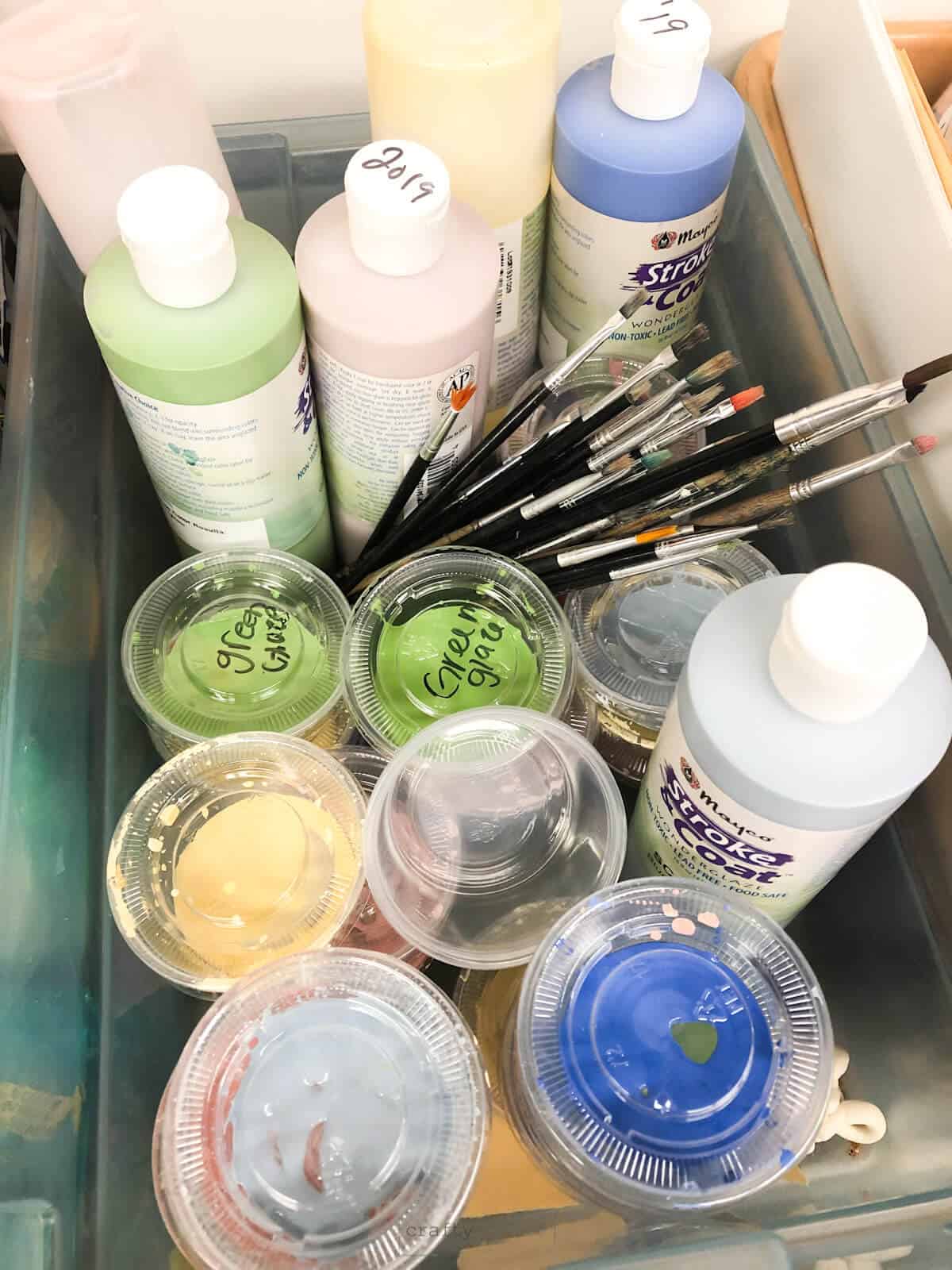
Tip 2: Use 3 layers of glaze
Make sure kids use 3 coats of glaze. Normally we encourage kids to not mix the colors or at least understand that glaze colors don’t always mix like regular paint.

However, Mayco Stroke and Coat glazes normally don’t give you a crazy color result. We have seen some color combinations with Amaco glazes that are unexpected. We like to tell kids that they may be chancing getting an ugly brown if they mix colors. They seem to understand this pretty well.
Tip 3: Make small tiles to see the glaze color
Create glaze tile examples for children to see what the colors will look like after they come out of the kiln.
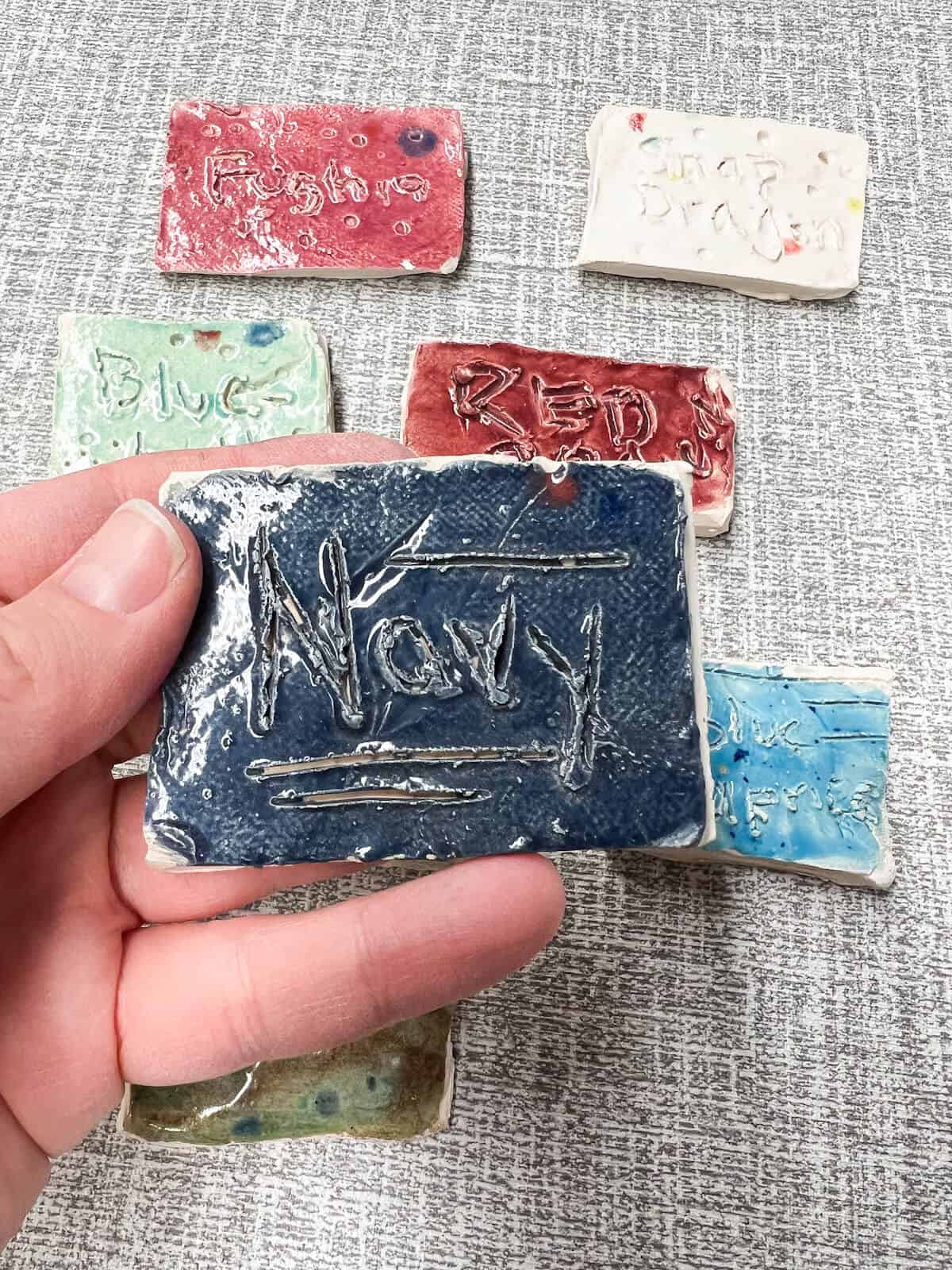
Tip 4: Clean and dry brush demo
Make sure children know how to clean and dry the brush when using glaze.
Tip 5: Use older stiffer brushes
A stiffer brush works better for children to get all the white spots covered on their clay projects. We also tell children that they can “jab” the brush more than if we were just painting paper. The number one goal is to get the kids to cover the whole clay project.
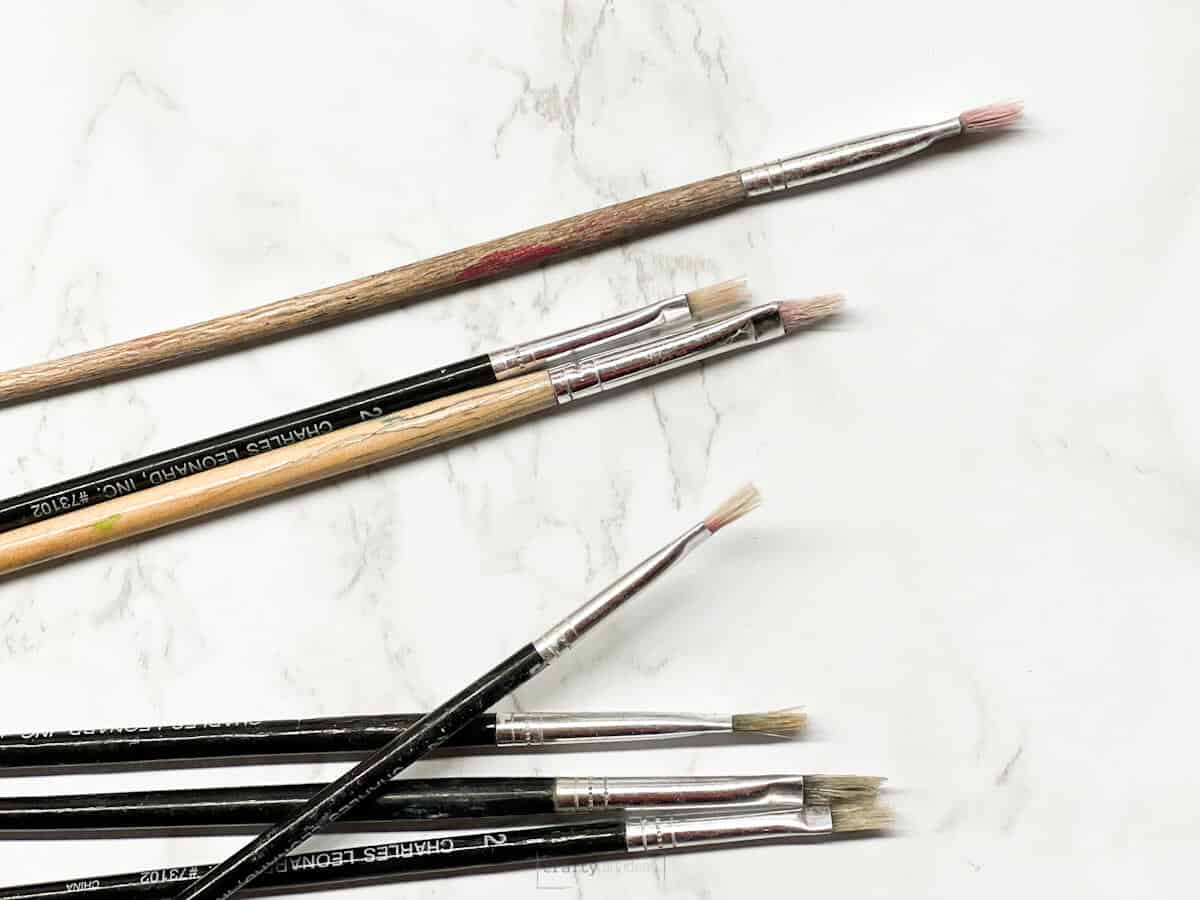
Tip 6: Don’t glaze the bottom
Do not have children glaze the bottom of the clay projects. You can also state this by explaining that they do not glaze anything that touches the table. If you have kiln glaze stilts you can ignore this step.
Tip 7: Have fun getting kids to see if they have completely covered their ceramic project
Before children can turn in their glazed clay projects, tell them to put on their white inspector goggles. They should spend an extra 5 minutes looking at their project to make sure they truly cover all parts with glaze.
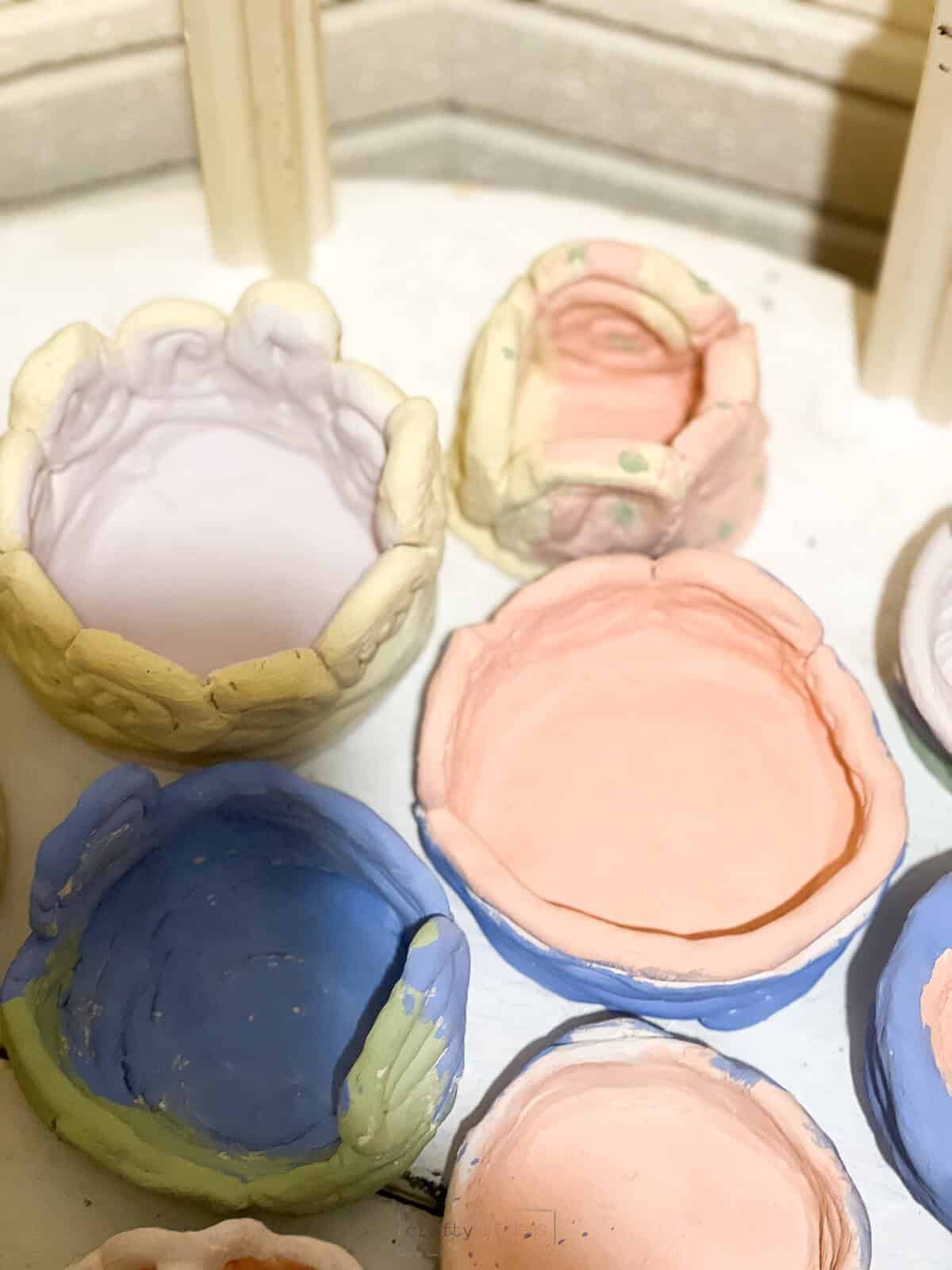
Tip 8: Limit colors available
Depending on the project, it is sometimes best to limit the colors they may use. For example, we limit children to picking 3 colors when glazing their clay owls or easy flower pinch pot projects.
You should allow them to use the glazes in any combination of colors that they would like. Always give them the choice of where the colors go. Sometimes less is more when using color.
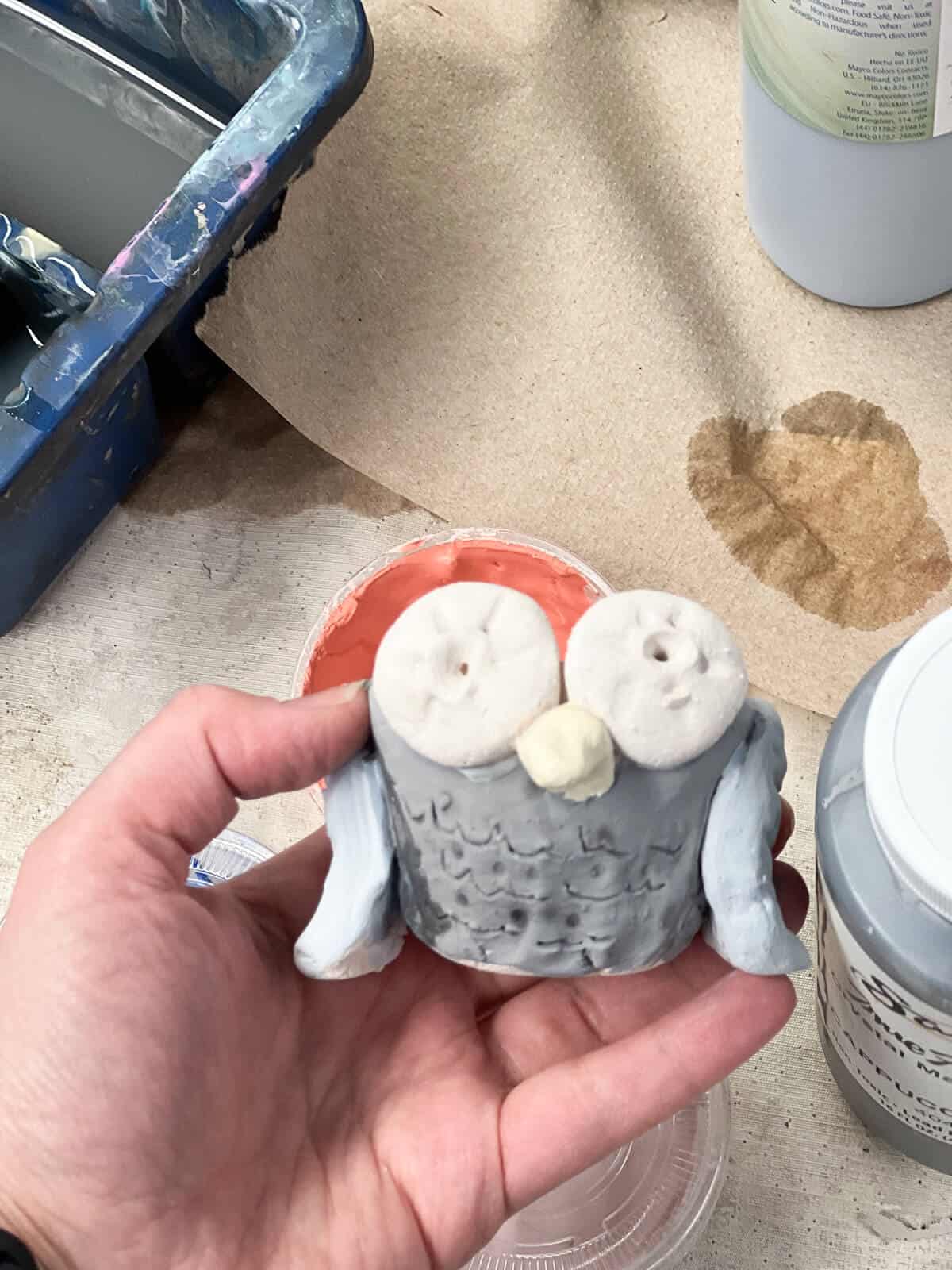
A few of our favorite glaze colors
Mayco Crystalites Glazes like Cappuccino Mint: a natural-looking crystal glaze that was awesome in our clay owl project.
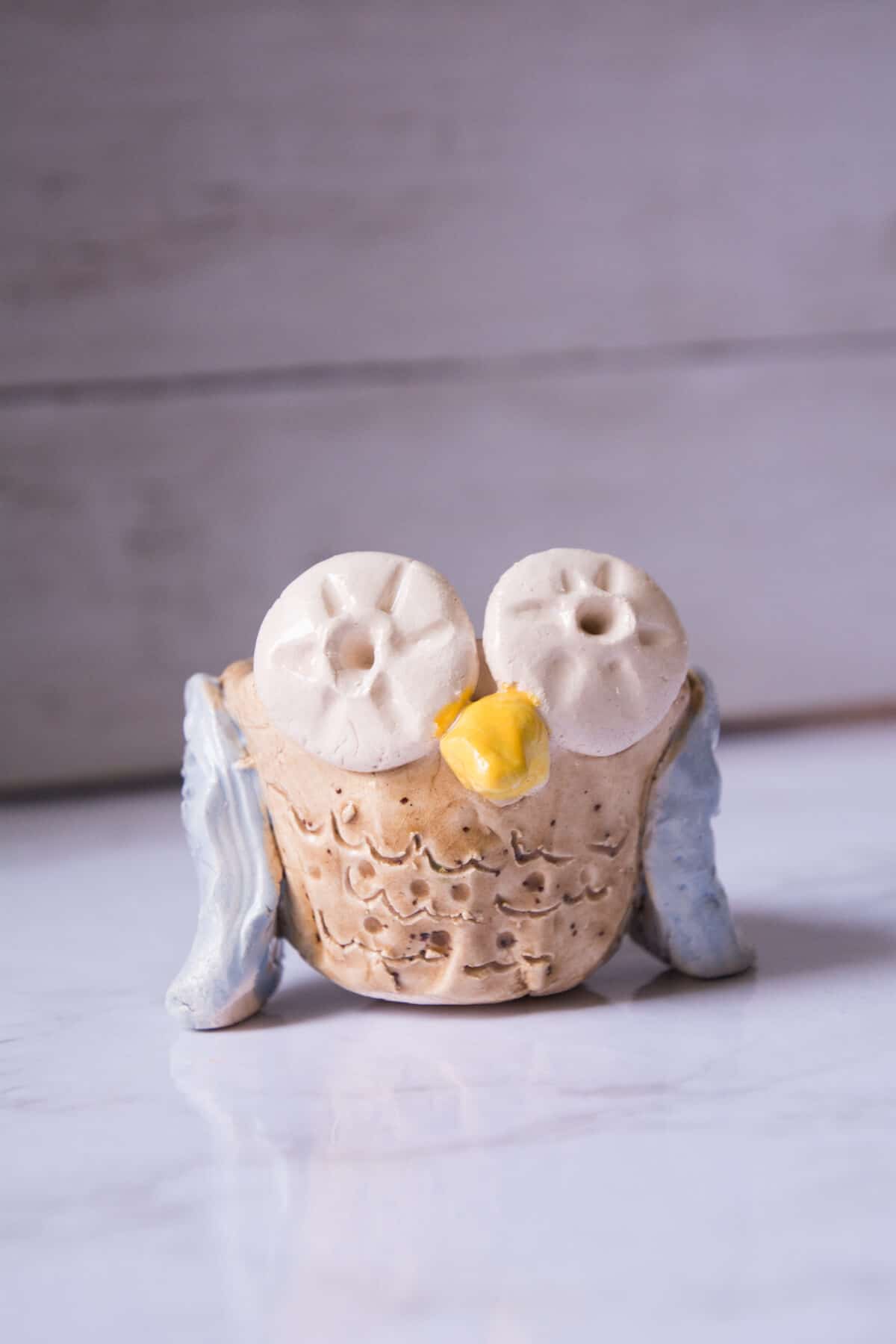
In the image below you can see somehow successful kids can be with Mayco Stroke and Coat. The following colors are what you are seeing on coil pots made by 10-year-old artists: Pink-a-Dot, Moody Blue, and Dandelion.
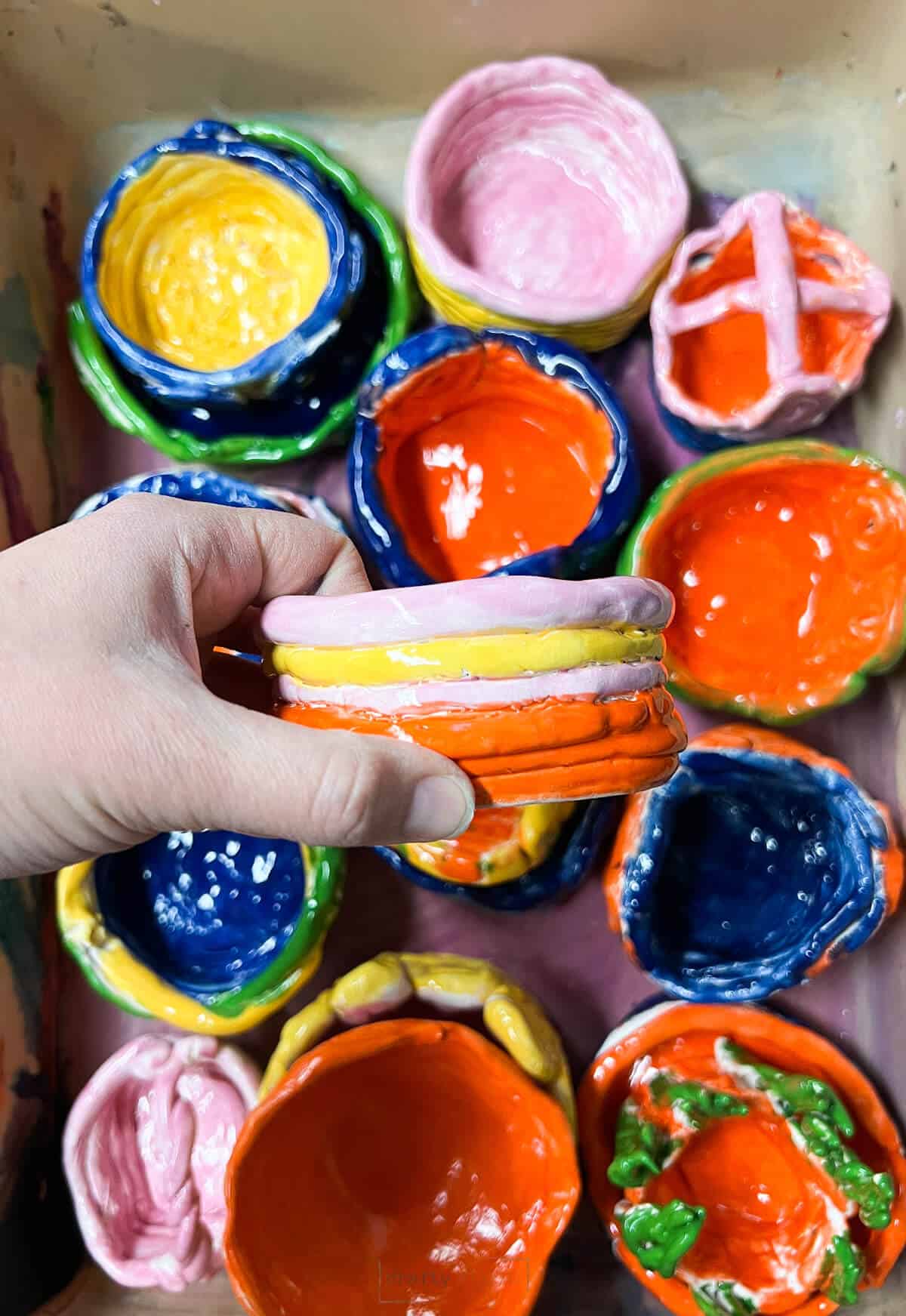
Kids are very successful with these basic medium-toned pink glaze, darker blue glaze and rich yellow low fire glazes.
Amaco Bluebell or Aquamarine: These opalescent glazes are still able to be fired at cone 05 and are considered low-fire. They even look amazing on red clay bases.
Amaco Transparent Pearl: This low fire glazes add a little something extra than just using a flat white. You can see the owl eyes were done with Transparent pearl.
Tip 9: Take a damp sponge and wipe the bottom of all glazed projects
The last thing you want to do is not be able to get a clay project out of your kiln. Assuming you don’t have kiln stilts, just take a sponge and double-check the bottoms are clean when loading the kiln. It will save you the hassle of those extra drips (and we know even the most careful kids will drip glaze).
Can you put clay glaze on greenware (dried clay) that hasn’t been bisque fired?
We can say that we have had kids use Mayco Stroke and Coat successfully on non-bisque fired clay projects. In a pinch, you can have older kids do this. The biggest con to this is that the dried clay projects are more fragile and could break easier.
We have had children use Stroke and Coat Glazes on unfired projects. Their colors look the same as the others that did have bisque-fired coil pots.
Other brands of glazes will also work you just have to really be sure kids put 3 coats or layers of glaze.
What if you don’t have time for another glaze fire?
There are other ways to add color to bisque-fired clay. We love using old oil pastels in an oil pastel resist process on clay. In a pinch, acrylic paint can on clay work just fine and you can always coat it with mod podge for that glossy look.
You can also check out another post on our on our site where we talk about the different appearances you can get by using a variety of clear coats on clay projects.

More clay project ideas
- Super easy clay turtle project
- Ceramic fish sculpture that kids can truly make their own
We know that families will actually save children’s ceramic projects for years to come.
Follow us on Pinterest or Flipboard for more free art and craft ideas!
